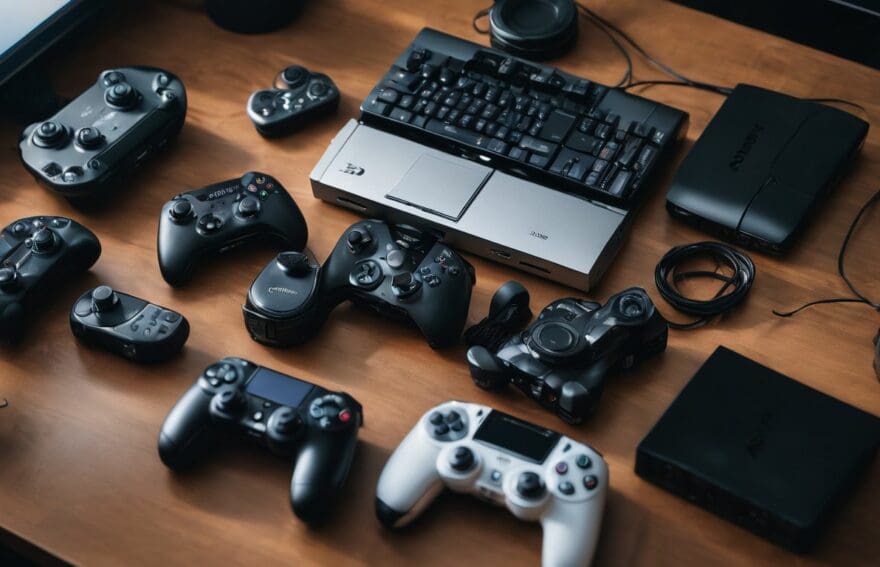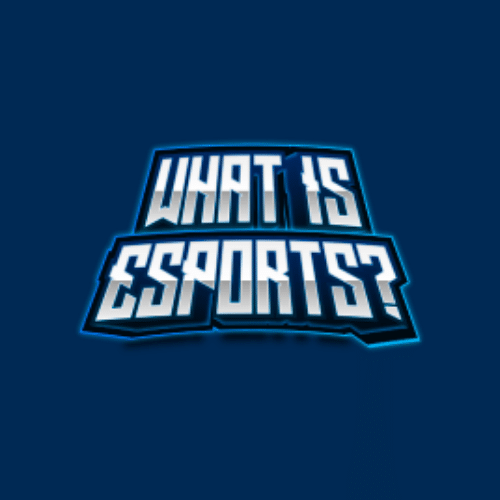Bridging the Gap: FGC and Cross-Platform Play

Updated On: February 14, 2024 by 
Are you tired of not being able to play with your friends because they’re on a different gaming platform? Frustrated by the limitations of cross-platform play in fighting games? Well, did you know that full crossplay can bridge the gap between players of different fighting games, making gameplay faster and more efficient? In this blog, we’ll explore the importance and benefits of cross-platform play in the FGC, as well as potential solutions to address this issue. Let’s dive in!
Key Takeaways
- Cross – platform play is crucial in uniting the fighting game community, allowing gamers from different consoles and PCs to play together.
- Technical challenges like varying network standards and hardware differences hamper seamless crossplay but can be overcome with collaboration between platform holders.
- Implementing standardised hardware and software could solve many cross-platform issues, making it easier for players to connect across different systems.
- Expanding cross-platform capabilities has the potential to grow the FGC, enhance e-sports tournaments, and meet consumer demands for more inclusive gaming experiences.
- The continued push for crossplay reflects a shift towards a gaming future focused on connectivity and accessibility regardless of platform choice.
Importance of cross-platform play in fighting games
Cross-platform play in fighting games is a game-changer, it tears down barriers and unites us regardless of the console or PC we use. We can’t overstate how vital this is for keeping our community vibrant and competitive.
With crossplay, we welcome an expanded pool of opponents, making matchmaking quicker and ensuring there’s always someone ready to face off with us. It means more tournaments, larger online events, and fresh challenges every day.
We’re moving towards a future where games bring us together without platform restrictions. Fighting game enthusiasts now have the chance to connect with countless others around the globe.
This integration deepens our shared experiences in the FGC (Fighting Game Community) – it’s about unity as much as it is about rivalry. Cross-platform compatibility ensures no one gets left behind because they chose a different system or upgraded their console; everyone steps into the arena on equal footing.
Current State of Cross-Platform Play
Cross-platform play in the FGC is still limited, with many barriers preventing seamless multiplayer compatibility between different gaming platforms. However, there are ongoing efforts to enhance cross-platform play and improve the online experience for fighting game enthusiasts.
Limited support and barriers
We’re seeing that crossplay in the fighting game community is still a work in progress. Many games lack the support for this feature, which can lead to longer wait times for matches and a smaller pool of opponents.
Sometimes, hardware and software differences between consoles and PCs create hurdles that developers must leap over. It’s crucial to iron out these issues as fragmentation within the gaming platforms often hampers player connectivity.
Despite its importance, there are significant barriers to implementing full multiplatform gaming within our beloved FGC. Complications arise with varying network standards, controller inputs, or even different update schedules across systems.
These challenges need addressing if we aim to unite our player bases seamlessly. Gamers on older console generations fear being left behind after new releases – bridging this technological divide is essential for keeping everyone in the fight together.
Benefits of Cross-Platform Play in Fighting Games
Cross-platform play in fighting games offers an increased player base and more seamless matchmaking, leading to enhanced online gaming experiences for all. With the ability to connect with players across different platforms, the potential for growth within the fighting game community is immense.
Increased player base and matchmaking
Cross-platform play in fighting games leads to an expanded player base, creating more opponents and allies to connect with. This results in quicker matchmaking times and more diverse skill levels, enhancing the overall gaming experience for everyone involved.
The collaboration across different platforms eliminates the constraints of being restricted to a specific console or device, allowing players to seamlessly unite and compete against a wider range of opponents.
The integration of cross-platform play encourages a healthy competitive environment by ensuring that there is always someone available for a match. With a larger pool of players comes increased opportunities for skill improvement and strategic development.
Enhanced online experience
Cross-platform play significantly enhances the online gaming experience by expanding the player base and improving matchmaking. With crossplay, players have a larger pool of opponents to compete against, leading to shorter wait times and more diverse gameplay.
This creates a dynamic and engaging environment for both novice and seasoned gamers.
Integrated platforms ensure seamless interaction across different devices, offering a unified experience for players regardless of their chosen gaming platform. The connected nature of cross-platform play fosters a sense of community within the gaming world, bolstering interactions between players on various consoles or systems.
Challenges Faced in Implementing Cross-Platform Play
Implementing cross-platform play in fighting games comes with its fair share of challenges, including technical limitations and the need to balance gameplay between different platforms.
However, these obstacles can be overcome with innovative solutions and a collaborative effort from all involved parties.
Technical limitations
Cross-platform play faces technical limitations due to differences in hardware and software architecture across various gaming platforms. These disparities can result in compatibility issues, making it challenging for developers to create a seamless cross-platform experience.
Additionally, differences in system performance and input devices can affect gameplay balance and fairness, posing significant hurdles for implementing cross-platform play across fighting games.
The complexity of addressing technical limitations involves ensuring that game data communication is uniform and stable across different platforms, allowing for fair competition without compromising the gaming experience.
Balancing between different platforms
Bridging the gap between different platforms involves navigating the complexities of hardware and software variations while ensuring a seamless gaming experience for all players. Cross-platform play requires careful coordination to maintain fairness and equality across different gaming systems.
Standardising game mechanics and controls is crucial to provide an even playing field for all participants, regardless of their chosen platform.
Unified matchmaking systems must be implemented that consider the unique strengths and limitations of each platform, ensuring that all players can engage in fair competition. Moreover, ongoing updates should strive to deliver consistent performance across multiple consoles, maximising accessibility and enjoyment for the entire gaming community.
Solutions to Bridging the Gap
Collaborations between platform holders can lead to standardising hardware and software, making it easier to implement cross-platform play. This could potentially unite player bases and improve the overall gaming experience.
Collaborations between platforms
Collaborations between platforms can lead to a more seamless gaming experience, allowing players from different consoles and devices to play together. This opens up avenues for shared resources and expertise, ultimately benefiting the entire gaming community.
Interoperability of gaming systems through collaborations ensures that players across various platforms have access to the same content and features, enhancing the overall inclusivity in multiplayer gaming experiences.
Furthermore, uniting player bases through cross-platform collaborations can foster a stronger sense of community among gamers who were previously isolated due to platform exclusivity.
Standardising hardware and software
Standardising hardware and software across different gaming platforms enhances the cross-platform play experience. By ensuring that all hardware and software meet the same standards, developers can create a more seamless, unified gaming environment.
This allows for smoother gameplay, easier matchmaking, and a more cohesive online community for gamers on various consoles. Standardisation also addresses the issue of compatibility between different systems, ultimately making it easier for players to connect and compete across platforms.
Implementing standardised hardware and software can also lead to a more inclusive gaming community. It ensures that players are not limited by their choice of console or device when participating in cross-platform play.
Future Implications of Cross-Platform Play in FGC
The potential growth of the fighting game community is on the horizon, with cross-platform play breaking down barriers between players. This could have a significant impact on e-sports and tournaments, as well as drive consumer demand for more games to support cross-platform play.
Potential growth of fighting game community
Cross-platform play holds enormous potential for the growth of the fighting game community. With the ability to connect players from different platforms, the player base expands, creating a larger and more diverse community.
This means increased opportunities for competition, skill-sharing, and collaboration among enthusiasts who were previously restricted by platform limitations.
The inclusive nature of cross-platform play has already begun to break down barriers within the FGC. By uniting gamers across various consoles and devices, we’re seeing a surge in participation in tournaments, events, and casual matches.
Impact on e-sports and tournaments
Cross-platform play has a profound impact on e-sports and tournaments within the Fighting Game Community (FGC). It allows for larger player pools, increasing competition and diversity in gameplay styles.
With cross-platform compatibility, e-sports events can become more inclusive, drawing in talented players from different platforms to compete at the highest level. This not only fosters a stronger sense of community but also brings new opportunities for growth and recognition within the competitive gaming landscape.
The integration of crossplay also paves the way for more engaging and dynamic tournament experiences. By enabling players from various platforms to participate, tournaments become more vibrant and exciting environments where different strategies collide, pushing boundaries and raising the overall standard of gameplay.
As a result, this amplifies interest among spectators and strengthens the appeal of e-sports within the FGC.
Consumer demand for cross-platform play
Gamers of all levels are actively pushing for the implementation of cross-platform play as they seek to connect and compete with a larger player base. The demand for seamless integration of platforms is reshaping the gaming landscape, driven by an aspiration for inclusivity and accessibility within the gaming community.
With crossplay, players can break free from platform restrictions and enjoy a unified multiplayer experience, ensuring that no one is left behind due to their chosen gaming device.
As we move towards a more connected future in gaming, consumer demand for cross-platform play continues to grow steadily across various genres. This widespread desire highlights gamers’ eagerness to transcend platform barriers and foster a sense of unity through online multiplayer experiences.
Conclusion
In conclusion, the future of cross-platform play in the FGC looks promising. Collaboration between platforms and standardising hardware and software are key steps to bridging the gap.
This move will not only boost the gaming community but also meet the growing demand for cross-platform play across different genres. The potential growth of e-sports tournaments with inclusive gameplay experiences is on the horizon.
FAQs
1. What is Cross-Platform Play in gaming?
Cross-Platform Play allows gamers to play together online, even if they’re using different consoles or devices. This bridges the gap between various platforms and lets friends connect no matter what system they have.
2. How does Cross-Platform compatibility benefit the FGC?
Cross-Platform compatibility benefits the Fighting Game Community (FGC) by letting players on different systems battle each other, leading to more competition and a united community of gamers across all consoles.
3. Can all games support Cross-Platform Play?
Not every game supports Cross-Platform Play; it depends on whether game developers have included this feature to allow for crossplatform gaming between consoles.
4. Why is bridging the gap between consoles important for gamers?
Bridging the gap between consoles makes gaming more inclusive and convenient, allowing friends to play together regardless of which console they own, expanding player bases, and uniting communities from different platforms.


